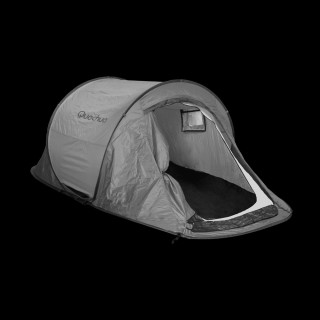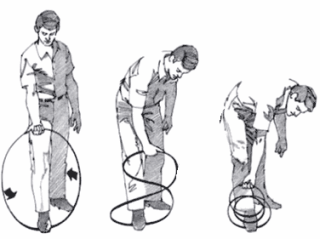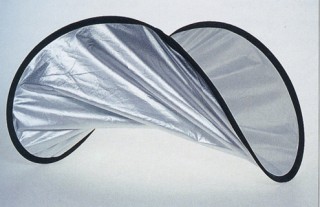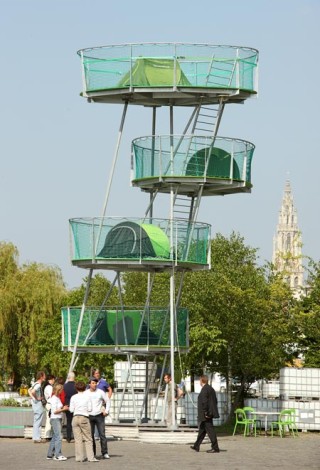- Manufacturer: Quechua
- Material: PU-coated polyester, PU-coated polyethylene, fibreglass
- Dimensions: 210 × 120 × 90 cm
- www.quechua.com

Index
- Types A tent is a shelter consisting of sheets of fabric or other material draped over or attached to a frame of poles or attached to a supporting rope. Whi
- Components Conventional tent parts A flysheet or rain fly (found only in double skin tents) is used to protect the actual tent from water. A flysheet is waterpro
- Quechua Quechua tent Quechua is a French brand and was initiated in 1996 as Decathlon's Mountain Sports brand. Their headquarters are based at Sallanches, at
- Inspiration Photographer 's Collapsible The photographer's collapsible light reflector was invented in 1985 by the photographer John Ritson, who had the idea when
- Tents in the City Tents for homeless people In Paris, the government has promised to spend more money on shelters for the homeless, following pressure from an aid group
A tent is a shelter consisting of sheets of fabric or other material draped over or attached to a frame of poles or attached to a supporting rope. While smaller tents may be free-standing or attached to the ground, large tents are usually anchored using guy ropes tied to stakes or tent pegs. First used as portable homes by nomadic peoples, tents are now more often used for recreational camping and temporary shelters.
Tent types:
Avian Tents
One or two straight poles with the tent cover spread out create a covered ground area. They are mostly used for quick shelter and generally light weather conditions.
Pyramid Tents
One central pole and the tent cover pulled tight and spread out around the center pole form a pyramid shaped pocket. Pyramid tents are rare in Hiking as the center pole effectively divides the tent in multiple smaller compartments.
Traditional A-Frame Tents
Two-legged frames at the outer ends of the tent with the tent cover form a triangular pocket. Old backpacking tents were often A-frame tents. The increased roominess of hoop tents and domes has replaced most A-frame tents.
Modified A-Frame Tents
Add a ridgepole and a center hoop to the traditional A-Frame to create a larger volume version of the traditional A-frame pocket. Modified A-Frame tents are also becoming rare in Hiking.
Hoop Tents
Use one to three hoops with the tent cover to form a tubular pocket. The curved walls give a bigger volume with the same ground surface. Hoop tents are surprisingly strong as they divide pressure over the full length of the hoops.
Wedge Tents
Two intersecting hoops with the tent cover form a square to round pocket. These tents are very popular in Hiking as they combine great strength in combination with the least use of material and weight.
Dome Tents
Three or more intersecting hoops with the tent cover form a multi-faceted ground floor with a dome. The added hoops give this tent increased strength in comparison to Wedge tents. However, they are mostly pretty difficult to erect. Most 4-Season tents are domes with four intersecting hoops.
Conventional tent parts
- A flysheet or rain fly (found only in double skin tents) is used to protect the actual tent from water. A flysheet is waterproof on the outside and also provides a surface to collect condensation on the inside, which then runs down to the ground. When a flysheet is used, it is important that there be no contact with the inner tent it is protecting; this keeps the inner dry.
- The inner tent comprises the main body of the tent. For double skin tents, the inner tent (often mesh) is not waterproof since it is protected by the rain fly. For single skin tents, the inner tent is often made of waterproof-breathable material that prevents liquid water from penetrating the inside of the tent, but still allows water vapour to be transported out.
- The poles provide structural support. They may be collapsible for easier transport and storage. Some designs use rigid poles, typically made of metal, or sometimes wood. Other designs use semi-rigid poles, typically made of fiberglass, or sometimes of special metal alloys. Another pole type uses inflatable beams as the structural support.
- Stakes (or tent pegs) or screws may be used to fasten the tent to the ground. Some are attached to guy ropes that pull outward on the poles and/or fabric to help shape the tent or give it additional stability. Others are used to anchor the bottom edge of the fabric to the ground. Pegs may be made of wood, plastic, or metal.
- Air vents help reduce the effects of condensation. When people breathe, they expel quite a lot of water vapour. If the outside of the tent is colder than the inside (the usual case), then this vapour will condense on the inside of the tent, on any clothing lying about, on the outside of a sleeping bag, etc.
- An optional tent footprint or groundsheet protector may be used. This is a separate flat groundsheet which goes underneath the main groundsheet, and is slightly smaller than that groundsheet.
- The vestibule is a floorless covered section located outside a tent entrance that is typically used for the storage of boots, packs, and other small equipment.
- A groundsheet is used to provide a waterproof barrier between the ground and a sleeping bag. With double skin tents, the inner tents normally have a sewn-in groundsheet, but a separate flat groundsheet may be provided for any living area.
Materials and the elements
Tent fabric may be made of many materials including cotton (canvas), nylon, felt and polyester. Cotton absorbs water, so it can become very heavy when wet, but the associated swelling tends to block any minute holes so that wet cotton is more waterproof than dry cotton. Cotton tents were often treated with paraffin to enhance water resistance.
Nylon and polyester are much lighter than cotton and do not absorb much water; with suitable coatings they can be very waterproof, but they tend to deteriorate over time due to a slow chemical breakdown caused by ultraviolet light. The most common treatments to make fabric waterproof are silicone impregnation or polyurethane coating.
Rain resistance is measured as a hydrostatic head in millimetres. Fabric with a hydrostatic head rating of 1000mm or less is best regarded as shower resistant, with 1500mm being usually suitable for summer camping. Tents for year-round use generally have at least 2000mm; expedition tents intended for extreme conditions are often rated at 3000mm.
Quechua tent
Quechua is a French brand and was initiated in 1996 as Decathlon's Mountain Sports brand. Their headquarters are based at Sallanches, at the foot of Mont Blanc.
The 2 Seconds tent is easy to use. There is no assembly required. Remove the tent from it's carrying sack, toss it in the air, and it is ready to use.

Photographer 's Collapsible
The photographer's collapsible light reflector was invented in 1985 by the photographer John Ritson, who had the idea when he watched a carpenter fold the band from a bandsaw.


Tents for homeless people
In Paris, the government has promised to spend more money on shelters for the homeless, following pressure from an aid group that set up rows of tents in Paris to draw attention to people sleeping rough.
With temperatures falling, the plight of the homeless has dominated front pages and politicians from all main parties have promised more help for those without a roof over their heads.
Some 86,500 people are homeless in France, according to official figures from 2001. Aid groups say more than 3 million people have serious housing problems in France – living on the street, in shabby hotels, caravans or in flats without bathrooms or heating.
Lobby group "The Children of Don Quixote" initiated the current debate when it set up dozens of red tents along Paris's Canal Saint Martin earlier this month, calling on Parisians to sleep out in the cold in solidarity.

Urban Camping
Camping is defined as getting away from an urban area, and enjoying nature, spending one or more nights on a location. (1) As such, the phrase urban camping contradicts itself.
Urban camping informally and unexpectedly revealed itself in examples such as parents camping in front of a school to enroll their kids or Harry Potter fans camping in front of a store to buy the newest release.
A new interest in city traveling has sparked a rise in low-budget traveling accommodation requiring a rethinking of urban visitor sleeping solutions. Existing low budget hotels, but also contemporary youth hostels are a limited and often poor answer to this general demand for cheap lodging in the city-centers. On the other hand, campers trying to visit cultural city centers on their drifting routes, often encounter camping areas located in the city's anonymous expanding outer limits.
IEA wants to setup an experimental process of research and design around this topic. The first results of this ongoing study where presented in the exhibition, 'It's about time Expo 2030' last summer at the Designcenter De Winkelhaak in Antwerp. The exposed material was mainly focusing on analyzing the phenomena of urban camping and trying to relate it to other topics such as: temporal territories, vertical staging of landscapes, multiple readings and interpretations on urban green and their potentials.






























































































